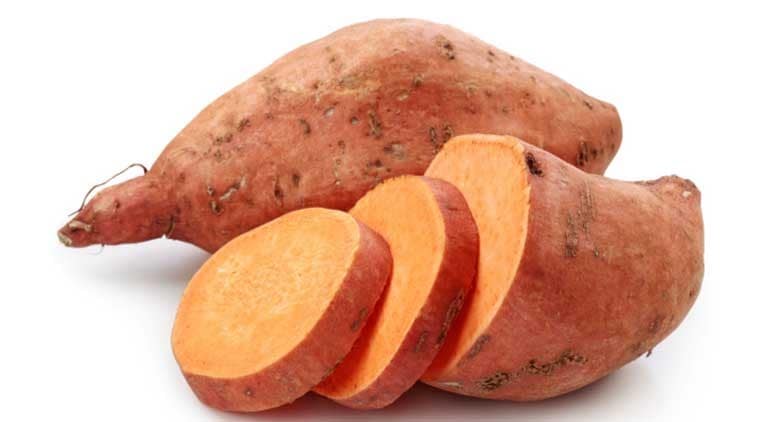Cooking methods also affect the glycemic index of a sweet potato.

Have you ever wondered why sweet potatoes are mostly eaten during the winter season? Unlike white potato, sweet potatoes pack in a lot of nutrition. In fact, did you know that one of the most prominent nutrient in sweet potato is Vitamin C? They are also rich in vitamin B, dietary fibre, and essential minerals especially potassium and manganese. Recently Union Health Minister Dr Harsh Vardhan highlighted the importance of including shakarkandi in one’s diet.
“Grab a few orange-coloured sweet potatoes, boil & make a yummy ‘chaat’! Packed with Vitamin A & C, shakarkandis are far more nutritious than the ordinary potatoes,” he said in the tweet.
If you haven’t cooked enough with this bright orange cousin of regular potato, it is now time for a change.
Studies show nutrients and high fibre content in sweet potatoes help people with obesity, high cholesterol and high blood pressure. In spite of its name, sweet potato is not related to the potato family and is quite different nutritionally, too. It belongs to the morning glory family. While the potato is a tuber or a thickened stem, the sweet potato is a storage root. Loaded with nutrients, sweet potatoes have made it to the list of top 10 diabetes super foods by the American Diabetes Association.
High in starch and fibre, the nature of carbohydrates differs from that of potatoes. Its high fiber content contributes to a lower glycemic index 44, which is almost half of potatoes (glycemic index 80). This property contributes to sweet potato being a useful carbohydrate source for weight watchers and diabetics.
Even Dr Vardhan highlighted that and wrote, “Since they have a low glycemic index, diabetics too can enjoy them”.
Here are other reasons you should have them regularly.
* According to a 2004 study led by University of Vienna associate professor Dr Berhhard Ludvik and published in the journal Diabetes Care, Type 2 diabetic patients treated with sweet potato saw significant decrease in blood glucose levels and overall improvement in glucose control.
A post shared by Crystal Rhyno (@crystalrhyno) on Jan 4, 2020 at 8:01pm PST
* Cooking methods also affects the glycemic index of a sweet potato. For diabetics, certain cooking methods are more conducive to managing blood sugar levels. Boiled or mashed sweet potatoes, for instance, are not recommended as they are digested faster, thus increasing their glycemic index and possibly causing blood sugar levels to spike. Similar to fiber, fat will slow the rate of digestion and therefore maintain the low glycemic index. A cooking method for sweet potatoes that is good for diabetics is sauteing in oil or roasting with the skins on. Sweet potato comes in a variety of skin colours that range from white to yellow, orange, and deep purple.
*Orange-fleshed sweet potato is an important source of beta-carotene, the precursor to Vitamin A. For soft, clear and supple skin, make sweet potatoes a part of your winter diet.
*Anthocyanins, which give the purple colour to sweet potatoes are powerful bioavailable antioxidants, which are utilised efficiently by the body. High in beta-carotene and vitamin C, regular consumption of sweet potato could strengthen the immune system and help develop resistance to infections.
Overall, sweet potatoes are a healthy source of carbohydrates, but remember to watch your portions.
For all the latest Lifestyle News, download Indian Express App
Source: Read Full Article



